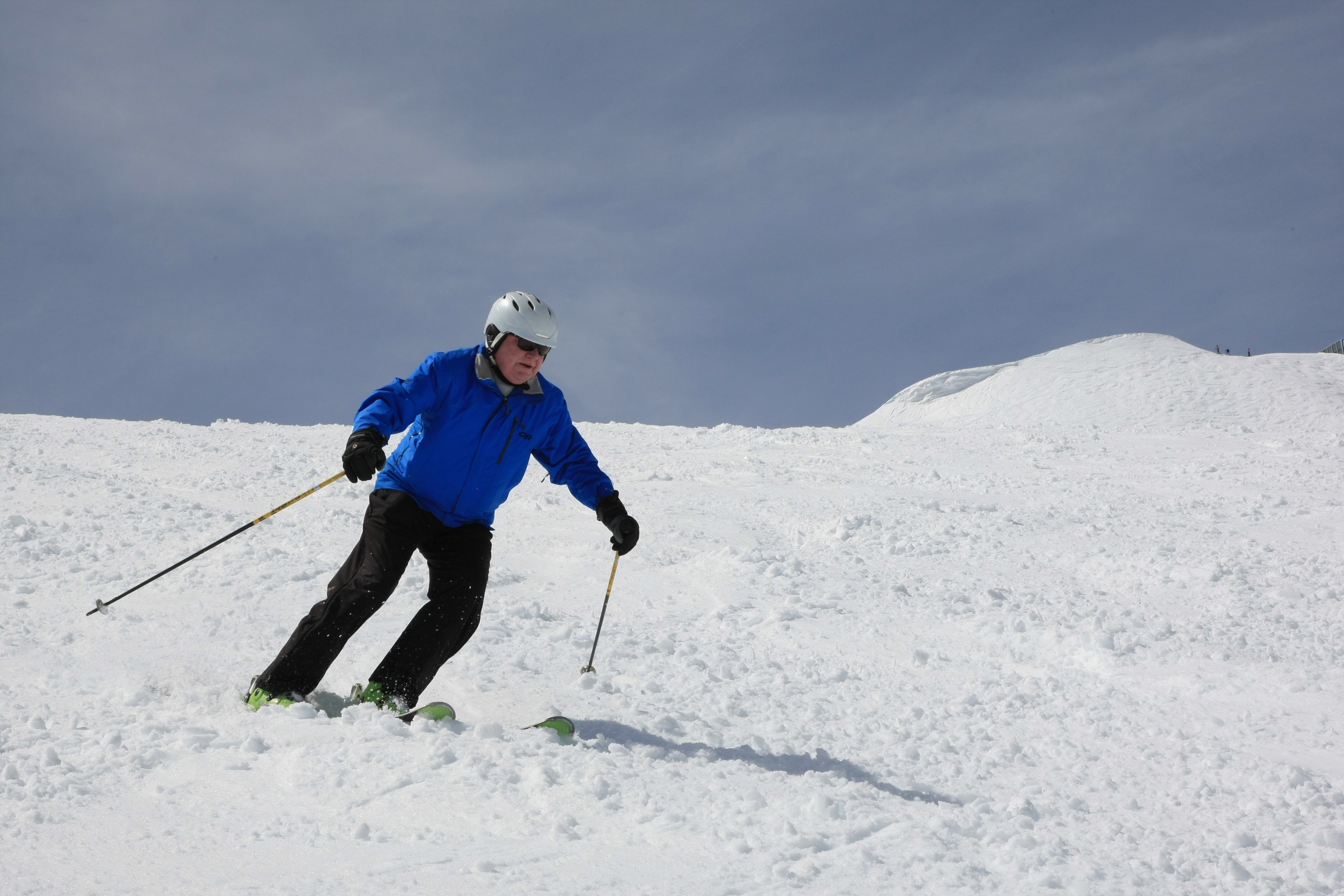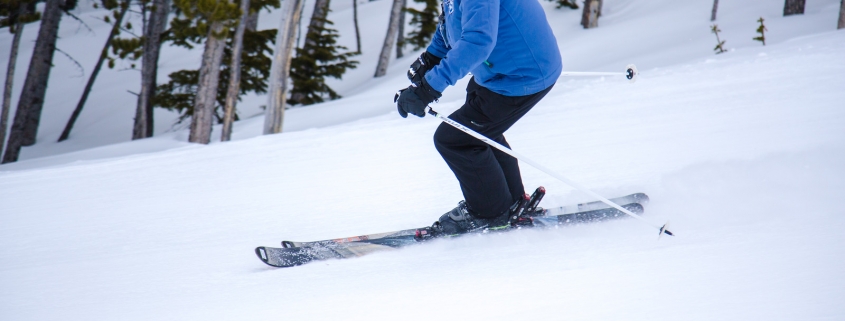Skiing Into a Healthy Old Age
This is part of an article that was originally written by Peter J. Dorsen, M.D. and published in a 1991 issue of The Professional Skier.
Let’s hear it for skiing – it’s a wonderfully forgiving pastime into old age. Most of us who live to ski are concerned that we’ll be able to continue our passion well into our twilight years. One guarantee for fulfilling such a vision is to continue our fitness program on and offf the slopes or trails. For most, and that includes myself, dying in our ski boots is the final destiny we would prefer.
Just how hard can we push ourselves or push our older, urban, or possibly less-fit sea level born-again racers? We ought to address this issue before taking off on a fast 3k loop or beginning some mogul busting down a mountain.
Scientists report that our lifespan won’t be lengthened by regular activity. But because the quality of our later years can be enhanced by regular activity, a physician’s prescription for moderate activity – for the high-risk and healthy alike – can facilitate a balanced, satisfying life. Older individuals who do exercise are describes as more alert and are blessed with faster reaction times.
Because I know plenty of 60-plus-year-old racers and recreational skiers who can still give me a run for my money, I tend to endorse University of Minnesota’s Bob Serfass, Ph.D.’s premise: “It is likely that much of the physical detriment in functional capacity of the elderly is due to culturally induced inactivity.”
Running cardiologist and sports visionary, Dr. George Sheehan, chides, “There are some of you 73-year-olds out there who are giving us other 70-year-olds a bad name.”

Epidermiologist-cardiologist Arthur Leon, M.D., the force behind many of the Me. Fit studies related to physical activity, claims that the supposed decline in maximum heart rate as we age may have more to do with how intensely their testers risked pushing them. “One woman who walked ten miles a day would have outdid me on the treadmill if I had let her go further,” Leon laughs. Were we to push older individuals closer to their output, Leon contends the discrepancy between the old and young might be narrower.
The wall many hit in Marathons may have as much to do with mental factors as dehydration or other physical reasons. Perhaps the sky’s the limit. So keep on soaring like the birds in the clouds.
One easy way to determine your level of fitness is to check your resting pulse before you hop out of bed in the morning. Less than 80 is good whereas over 80 may represent a greater risk for heart disease. A higher pulse may decrease life expectancy regardless of level of physical fitness.
Another interesting fact is that a high resting heart rate when we are young (below 36) has been associated with high blood pressure later in life due to perhaps increased sympathetic activity. Mine is 54 as I sit at sea level in the Minneapolis Public library writing this article. Aren’t I smug?
Just how hard can we push ourselves? Maximum heart rate declines with age, so most use the equation 220 minus your age or employ tables based on population data to determine someone’s limit. Limitations to achieving the highest possible oxygen consumption as external work increases (VO2 max) are attributed as much to an older person’s (1) fear; (2) muscular weakness; (3) shortness of breath; (4) degree of fitness; or (5) structural problems like arthritis, strokes, injuries – as to age alone. This can make comparisons between younger and older athletes difficult.
As we age, we lose muscle mass and replace it with fat and connective tissue. This has an effect on how hard we can work. All the answers are not in. Generally, everyone – athletes and the sedentary alike – have a decline in VO2 max with age.
I agree with physiologist, Roy Shepard, when he declares that older athletes should opt for the active life at some risk rather then aspiring for the illusion of longevity through cloistered inactivity.
The body was made to be used. Ken Cooper insists that out of the hundreds of thousands of exercise tests he has performed at the Aerobic Institute in Dallas, he has lost no one. He advocates 20 to 30 minutes of exercise to a sweat three or four times a week to prevent the atherosclerosis that can prematurely shorten our lives. Dr. Leon further emphasizes that simply good genes that bless us with a cardio-protective high HDL level and/or a high VO2 max allow such potentially gifted athletes to exercise more comfortably.
The skier who keeps fit can anticipate enhanced flexibility and the least loss of bone mass which develops maximally at age 35. Exercise is the only factor to increase bone bass. As our population becomes top-heavy in the young-old (65-75) or middle-old (75-80)- please excuse the pun – continuing fitness improves well-being, cardiovascular conditioning, general endurance, muscular strength, coordination, balance, and digestion. It decreases constipation, relieves anxiety, depression, and insomnia, sustains sexual vigor as well as affording a maximum amount of social contact.





